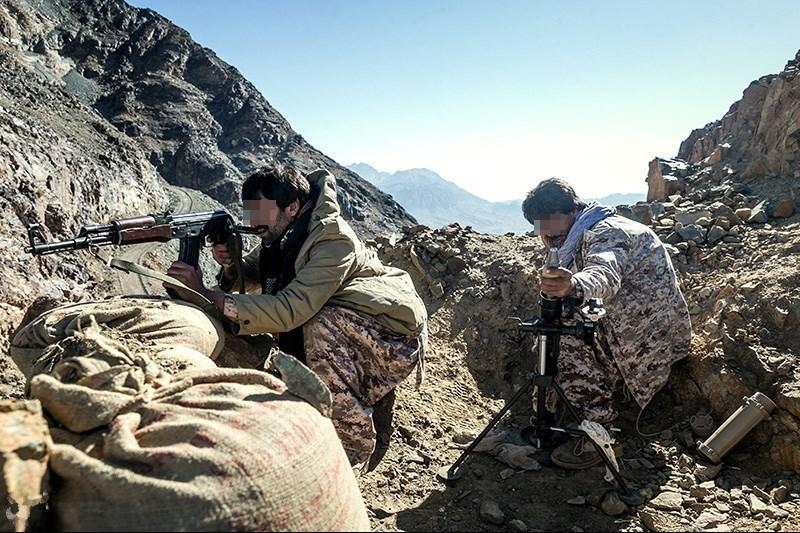Qassem Soleimani and Beyond
What's done is done. The United States needs to set priorities for what comes next.

Published by The Lawfare Institute
in Cooperation With

Editor’s Note: This article originally appeared on Order from Chaos.
I find it hard to oppose the Trump administration’s decision to target and kill Qassem Soleimani, the head of Iran’s Quds Force within the Islamic Revolutionary Guard Corps organization. In effect, as my colleagues Dan Byman, Suzanne Maloney, and Bruce Riedel among others have explained, he was the most important military leader in Iran and perhaps the country’s second most powerful leader overall. Soleimani’s machinations had led to the deaths of hundreds of American troops in Iraq (since the Quds force funneled explosively-formed penetrator devices and other technologies to the militias and insurgents that were fighting us there during much of the 2000s and beyond). Killing him was more akin to shooting down the plane of Japanese Admiral Yamamoto in World War II than attacking a civilian leader.
Iran’s lack of restraint in killing Americans also removed one major argument against political assassination in general—the fear of legitimating a form of attack that will then be used against our own country or citizens. While there is clearly a heightened fear of retaliation at this juncture, it was Soleimani, not America, that crossed the assassination threshold first and often—attacking Americans (and others) with abandon. He succeeded earlier Iranian leaders who had done equally heinous things against Americans in Beirut in 1983 and at Khobar Towers, Saudi Arabia in 1996. America’s history towards Iran is checkered, to be sure, in our support for the shah before 1979, and in our support for Saddam (at times) during the Iran-Iraq war. But over the last 30 years especially, it is Iran that has used lethal force against us much more than the reverse. And for the last 22 years, Soleimani was the chief plotter and mastermind in much of this. Given the believable intelligence reports that he was planning additional attacks against U.S. assets and personnel in Iraq, and given his central role over the years in many similar atrocities, I cannot object to this U.S. action.
So rather than debate the killing of Soleimani further—since what’s done is done—I would suggest the following overall strategy for what to do next. However justifiable the attack may have been, we do not yet know if it will turn out to be advantageous to our interests; future policy decisions will largely determine if that proves true.
- The most pressing matter is preserving, if at all possible, the U.S. military partnership with Iraq. If we are thrown out of Iraq by that country’s parliament as a result of this action, it will be a net win for Iran, since there will no longer be a balancing foreign power with comparable clout inside the country. It will also leave Iraq more vulnerable to further sectarian strife and/or ISIS and al-Qaida attack. America’s 5,000 troops have played important roles in training, providing air power, providing intelligence, and playing a role of political honest broker that has helped Iraqis of different sectarian groups work together. It may be too late to salvage our role, and our presence, in Iraq. But we should try.
- Notably, we should pledge not to conduct airstrikes like those of last weekend, against five facilities in Syria and Iraq of the Kata’ib Hezbollah militia, again. We should undertake any further unilateral actions within Iraq only in direct, immediate, tactical defense of our people there. We should also offer to help develop a plan, with outgoing Iraqi Prime Minister Adel Abdel-Mahdi and/or his successor, to pressure the most reckless Kata’ib Hezbollah groups economically as a first resort in the future (perhaps Iraq’s government could cut them off from the payments they now receive as a semi-official part of the Iraqi Security Forces).
- We also need to be even more vigilant in our protection of troops, military commanders, and diplomats in the broader Middle East. I suspect that Iranian retaliation may target the latter. We should try to make that kind of attack more difficult, and less likely to succeed. It would be better if Iran could be content with causing some additional property damage, to military or diplomatic or oil-related infrastructure, and calling it a day. That outcome may be unlikely, but we should seek to improve the odds of a relatively benign and non-lethal type of attack.
- Finally, we need a more realistic Iran strategy for the longer term. Indeed, if we sketch one out soon, the chances of persuading Iran to choose a less escalatory form of retaliation may improve. But right now, the Trump administration has a policy of economic constriction of Iran that leaves no real daylight for leaders in Tehran. If they want sanctions lifted and their economy restored, they need to abandon virtually all nuclear-related activities, pull back from virtually all machinations and adventurism in the broader region, accept major constraints on their missile programs, and accept Israel’s right to exist—all this according to a speech in the spring of 2018 by Secretary of State Mike Pompeo. At a moral level, most of these demands are reasonable; at a practical level, they collectively stand no chance.
- So we need to prioritize. My priorities would be roughly as follows. I would offer to lift sanctions on Iran if it would extend the 2015 nuclear deal’s restrictions to have indefinite duration (rather than 8 to 10 years for most of them, as is currently the case), and if it would acknowledge a state of non-aggression with Israel in some way, and if it would commit not to develop long-range intercontinental ballistic missiles, and if some kind of meaningful regional dialogues could be started on the key civil wars of the Middle East, from Syria to Lebanon to Yemen. In the meantime, Iran should cap its involvement in each of those conflicts at current levels or less.
Absent a vision for a less antagonistic U.S.-Iran relationship, whatever happens next in the aftermath of Soleimani’s killing will only be one piece of what is likely to be a worsening problem in the months and years to come. Right now, Iran is like a cornered animal, given the effectiveness of the economic squeeze being applied to it, and it will almost surely lash out in multiple and new ways as it looks for a strategic game changer.





